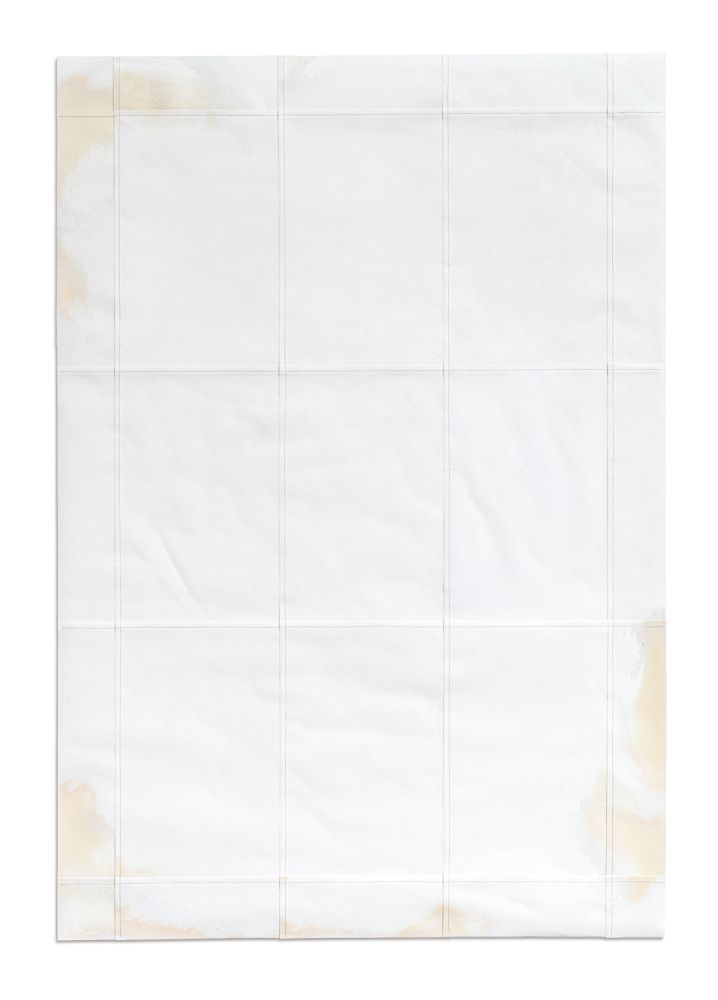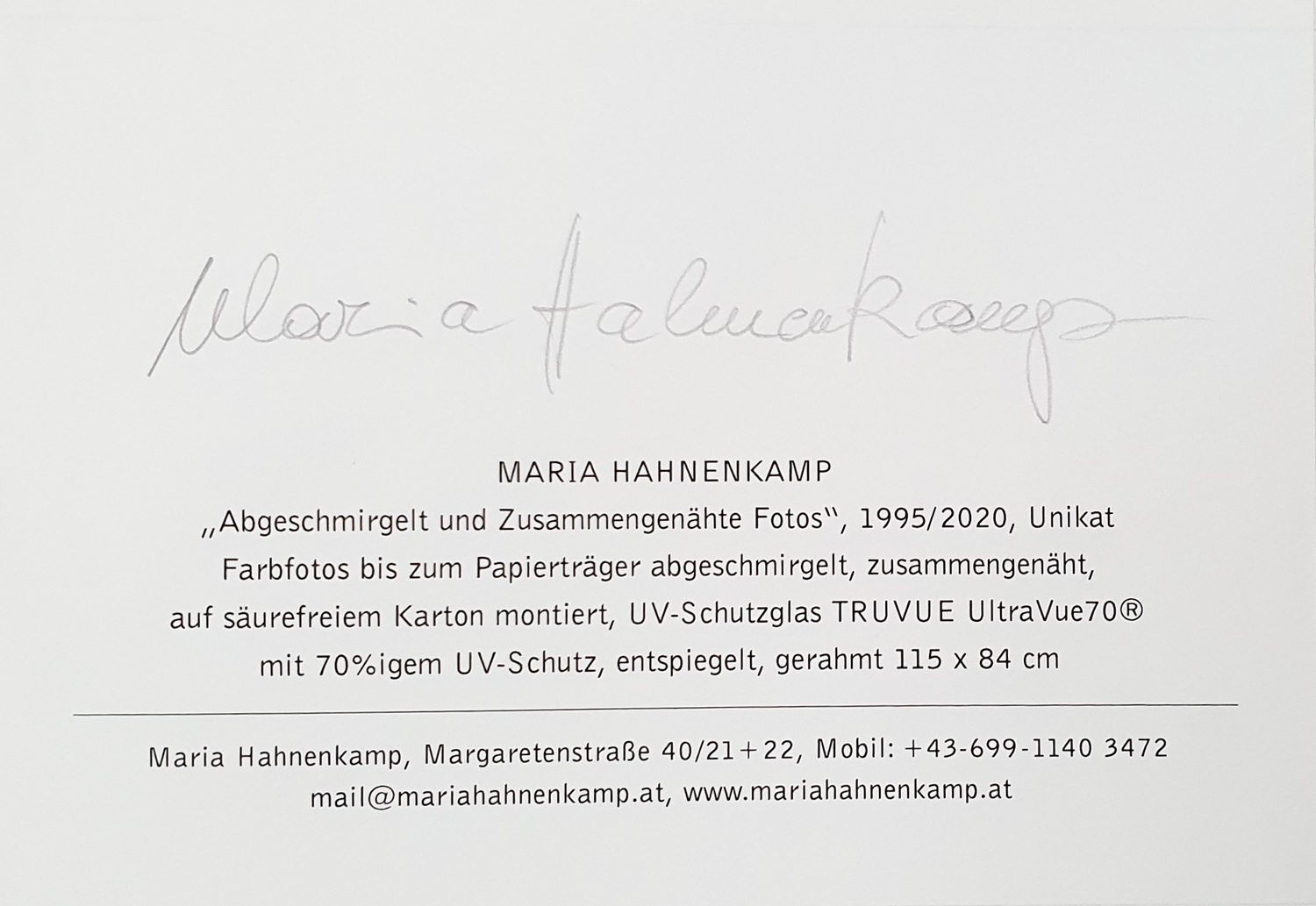"o. T."
C-prints sanded, sewn together on cardboard
signed and lable verso
In her photographic works Maria Hahnenkamp analyses the media treatment of the female body and forces a critical examination of its status in our society and the media-immanent treatment that questions the power of the media.
In 1992 Maria Hahnenkamp took hundreds of photographs of a woman during beauty care. But none of them can be seen in Hahnenkamp's photographs. In a radical act, the artist eliminated all content, first roughly using a drill with a grinding attachment, then finely sanded by hand and finally sewn together. The "typically female" interests were thus irrevocably erased. The act of erasure is also expressly recorded in documentary photographs, which show the artist sanding. White gloves indicate a subtle, fine craft that does not produce anything representational, but rather a social criticism. The mechanically radical gesture of robbing photography of its representation, eliminating all information and reducing it to its supporting element, is Hahnenkamp's reaction to the medial appropriation of the female body.
The sanded photographs are the most radical early work and unite the two themes that run through Hahnenkamp's work: her distrust of the (media) "image of woman" and her distrust of the media of representation in general.
(Ruth Horak, text fragment from: Maybe I should spend hours and dollars on perfecting myself so you will like me... in: Maria Hahnenkamp, Werkschau XXI - Katalog, Fotogalerie Wien, 2016)

